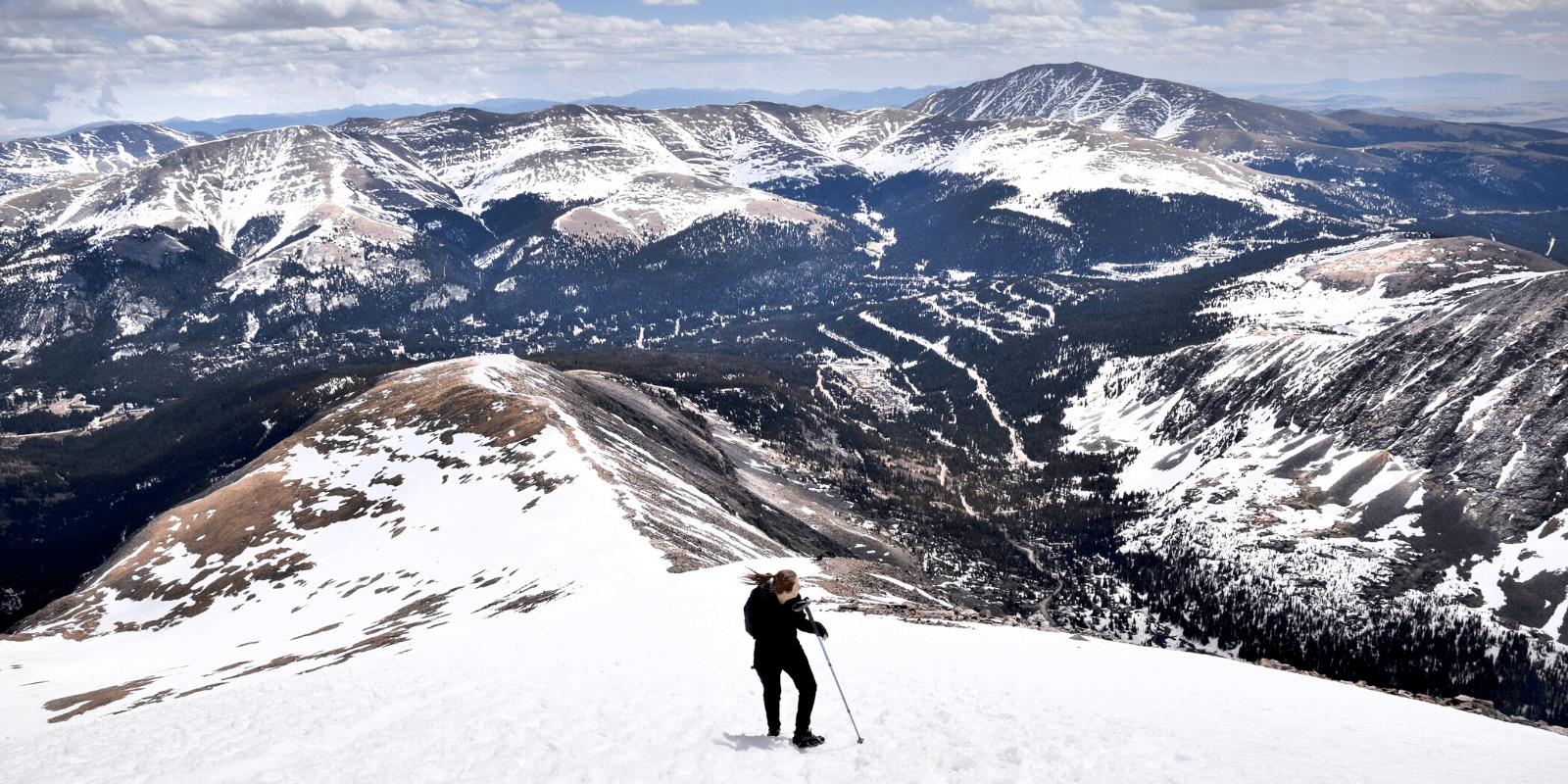We have much more to do and your continued support is needed now more than ever.
A Path to Conservation
How hiking a peak in Colorado inspired a new conservationist

Wind was whipping—blowing snow into our faces as we trudged the stair-master into the sky. The sensation of being hot and cold simultaneously was overwhelming. The gusting gale was enough to be blinding near the top of the slope and it forced me to momentarily turn around and recover my balance. I was near the summit of the mountain, looking down toward my hiking partner about 50 feet below. The roar of the wind died as I faced away from its path and watched the mountain cascade into the valley below. I felt as though I was the only person on the planet. Snowy peaks went as far as I could see, a blanket of intensely bright white. I will not forget the view, or the feeling it inspired.
It was my first time on the upper reaches of 14,265-foot Quandary Peak—a mountain in central Colorado. Many novice hikers begin their foray into climbing “fourteeners” with Quandary: it’s a steady incline for three miles and friendly to those who frequently lose their way (like me). It’s also one of the prime spots to see alpine-dwelling wildlife like the pika. A close relative of rabbits, but growing not much larger than a mouse, the pika is tiny but tough. A pika may live its entire life above treeline, a frigid place most mammals merely visit. Unfortunately, pikas are the new poster child for wildlife challenged by climate change. As the alpine environs warm up, pikas continue to lose habitat.
Quite apart from the amazing views, the wildlife and the feeling of accomplishment, what struck me most was the fact that this land belonged to me. All of it. From the summit of the peak I could see at least three designated national forests and three different wilderness areas and it all belonged to me.
For over 100 years, the federal government has conserved and protected some of this nation’s most awe-inspiring landscapes. The U.S. Forest Service, the Bureau of Land Management, the National Park Service, and the U.S. Fish and Wildlife Service manage more than 600 million acres of public land. It’s land that belongs to all of us for hiking, biking, kayaking, fishing, bird watching, and so much more. These lands are wildly popular. Every year, more than 330 million people explore national parks and 150 million people visit national forests. Unfortunately, all of this enthusiasm for recreation is starting to take a toll on these lands.
My hike up Quandary made me realize that if I am going to enjoy these lands, it’s also important to give back to them. Public lands are like something in your home used by the entire family. We all have an equal responsibility to maintain it.
After that hike, I dove into public lands issues, learning quickly that volunteers help build and maintain the trails on some of the state’s most traveled trails. More than 350,000 people climb fourteeners in Colorado every year, and that number continues to rise. Quandary Peak alone saw an estimated 35,000 individual hikers in 2018.
By happenstance, I discovered that the Colorado Fourteeners Initiative was partnering with Volunteers for Outdoor Colorado to build trail on that same mountain. So four months later, I returned to Quandary. This time instead of just carrying my backpack with the ten essentials, I lugged an egregiously heavy rock bar uphill to 13,000-feet. I was volunteering to build trails on the mountain in an effort to keep hikers from unintentionally trampling tundra. We dug up boulders weighing 500+ pounds and rolled them (very, very carefully) back toward the established trail then maneuvered them to create steps. The volunteer coordinator told me this type of work lasts about 100 years. Thousands of people, maybe even you, will walk on the steps I built into that mountain. It will also help save the lives of the flora and fauna that live there.
I left Quandary feeling fulfilled but wanting to do more. One day of conservation is a great start, but it’s only a start. The next summer I volunteered with the Colorado Fourteeners Initiative, talking to hikers about how to be a steward of public lands. I attempted to educate hikers on Leave No Trace principles while gathering trail data for future conservation projects. I also made a career change and started working for the public lands team at the National Wildlife Federation. My full time job is to advocate for the protection of public lands across the nation and to encourage the responsible use of those lands.
From a windy hike up above treeline, I began a new winding path into conservation. To ensure that our children will be able to enjoy these cherished places, we need to care for our public lands. After all, we own them.
Support the National Wildlife Federation’s work to protect our wild landscapes and the wildlife that call them home:
Donate!





















